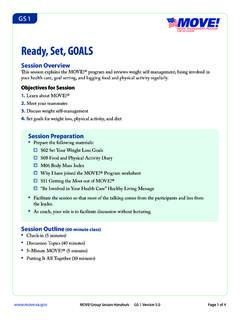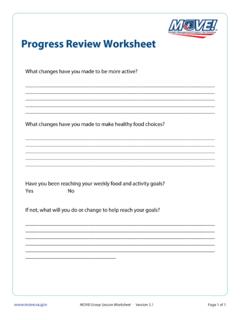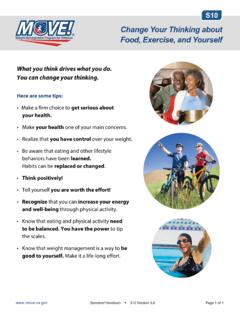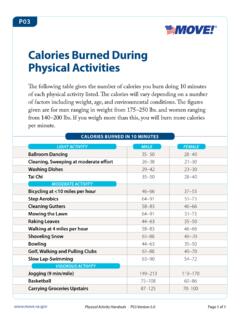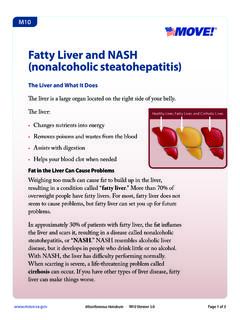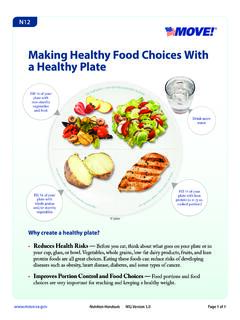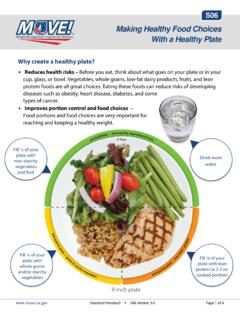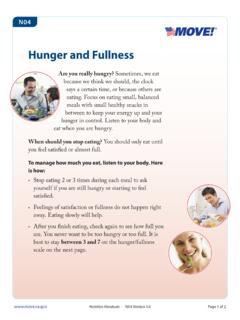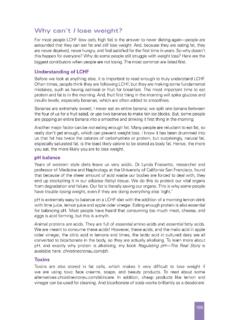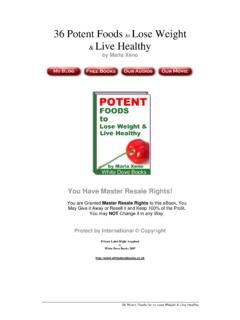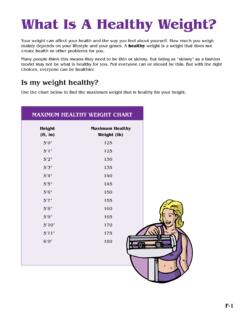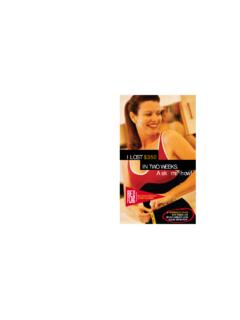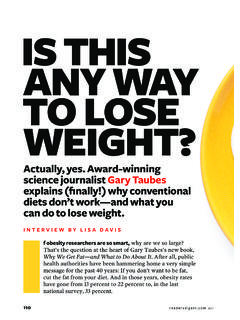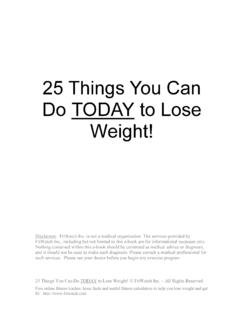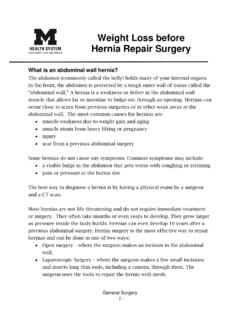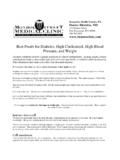Transcription of Eat Frequently to Lose Weight - MOVE! Weight Management ...
1 N22 Nutrition Handouts N22 Version 1 of Frequently to lose WeightEat small, balanced meals with small, healthy refreshments in between to keep your energy up and your hunger in control. Remember to keep your selections healthy, mindful, and portion controlled. Aim for at least three healthy, low-calorie meals and two healthy, low-calorie refreshments. Let s call these mini-meals. For your mini-meals, choose from a variety of food types. Space out your intake of carbohydrates (whole grains, vegetables, fruit), lean protein (lean meat, seafood, and meat alternatives like beans, peas, nuts, or seeds), and a small amount of fat to sustain your energy level. Timing your mini-meals is important. It isn t necessary to stick to the exact schedule every day, but losing Weight will be easier if you can stick to a regular schedule. The best time to eat is first thing in the morning. Food might be the last thing on your mind when you first wake up, but eating something healthy is important for raising your metabolism and staving off hunger pains later in the day.
2 The worst time to eat, on the other hand, is late at night. It s best to eat more food earlier in the day so you aren t overly hungry and experiencing cravings after dinner. Eating regularly throughout the day is the ideal way to eat when dieting. An example schedule might look like this:Nutrition Handouts N22 Version 2 of 7:30 Breakfast mini-meal 10:30 Refreshment mini-meal 12:30 Lunch mini-meal 3:30 Refreshment mini-meal 6:30 Dinner mini-meal It s always a good idea to keep extra snacks on hand and be prepared for last-minute schedule changes. You might find that 2:00 PM is the time of day you really need a snack. Set a meal schedule that works best for you. Examples of great mini-meal refreshments include: 1 tablespoon peanut butter on a sliced apple, carrot or celery sticks with 2 tablespoons of hummus, 1 ounce low-fat cheese, and salsa in a small, whole-wheat tortilla. Typically, refreshments should range between 100 and 200 calories.
3 Do not skip meals. If you go too long without eating, you will be very hungry. Then, you may be tempted to overeat at your next meal. Eat enough fiber. It helps fill you up. Whole grains, vegetables, and fruit are good sources of fiber. If you feel hunger between meals even when you are following a set meal schedule, you may be dehydrated. Track the amount of water you are drinking, and if necessary, add to your daily total. Hunger can be confused with thirst. Avoid empty calories, which are food or drinks with lots of calories but little nutrition (desserts, candy, alcohol, and sugar-sweetened beverages like soda). Remember: moderation, balance, and variety.
